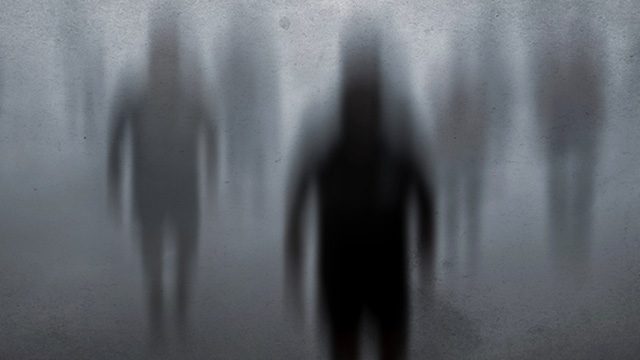SUMMARY
This is AI generated summarization, which may have errors. For context, always refer to the full article.

“Ghosts” has been a lucrative and entertaining theme in films and Halloween activities. Once in a while, I come across supposedly actual forays into detecting the presence of ghosts online or even as TV shows disguised as investigatory programs. But despite all the claims in history as well as anecdotes from our own circles of family of friends of the “comeback” appearances of those who have passed in this life, there has yet been no single, scientifically unimpeachable proof of ghosts.
But as a trick or treat or both, to celebrate Halloween, scientists are putting an end to this “silence.” Or something like that. In a special article that came out recently, two scientists uncharacteristically decided to take exception to the rule of evidence in research, skipping the part where they need to establish if ghosts are even real, and go straight to finding out what do ghosts feel? The result is a hilarious piece that in the process managed to expose the real inconsistencies that reasonable people would have to confront if ghosts were real.
It starts off by pointing to “newly founded” centers for ghost emotion research like, what else, but the CREEPS which is the acronym for the Center for Research on Emotion, Ectoplasm, and Psychological Science at the Università del Purgatorio in Italy. Apparently, this kind of research has great funding potential since they benefit from actual “personal communications” with two of the most thoughtful but dead luminaries in psychology namely Jean Piaget and Sigmund Freud.
They also noted that the emotion which stands out among ghosts is their desire – particularly their desire to scare those who are NOT ghosts. This desire among ghosts is, according to the authors, technically called “boo” in psych parlance. Although I have to admit that this made me curious as to why there seems to be a presumption among the living that ghosts lack the desire to scare other ghosts. I think it would be fun to see ghosts running around scaring other ghosts, intentionally or otherwise.
A special focus on decapitated ghosts was also noted as to how, even without heads and of course, the other senses that consider the “head” their home, these specific ghosts manage to find each other and move as a flock. I don’t know about that. I find that ghosts, regardless of any missing or wounded body part, like to socialize with each other. Proof? Just think of all the zombie films and programs and how these zombies naturally like to congregate. They have even done a historic blockbuster music video.
But nothwithstanding their seeming readiness to socialize with each other, ghosts could be the most problematic scientific subjects. And the authors articulated the reasons for this. For one, despite the number of the dead and the long dead outnumbering those alive today, ghosts are just really incredibly difficult to find and recruit. The next reason they gave is that even if they do find them, these ghosts seem to have a real sticky affinity to certain places (a.k.a. “haunted places”) so you can imagine how impossible it would be to even convince these ghosts to head to the academic labs to be part of scientific studies. And how about the very few ghosts who make it to the lab? Well, apparently they are not spotted by the researchers, probably because of the ghosts’ preference to be in gaseous state.
The lab devices to study ghosts also pose a problem because it is not a secret that ghosts are most cooperative only when the lights are out which leaves the living researchers wondering how they could measure their readings, avoid accidents and explain the insurance premiums resulting from these conditions. But luckily, the authors noted, some measures have been adapted, involving the purchase of garlic in “ghostly” proportions and of course, emergency lighting.
The most powerful scanning devices like the MRI machine is rendered useless as the authors say ghosts would just pass through them. And if they would have any accessories that would be visible, like their clanking chains, these, as we all know, could not go through the powerful magnets of the MRI machines. Most of all, in order to ensure the constant presence of the ghosts at least while the experiment is going on, the living researchers would also have to maintain a steady belief in the supernatural which is sort of a sore point in anyone doing scientific research.
But the bright side of the dark side is that it would be natural to do longitudinal studies (studies that follow the same subjects across long stretches of time) on ghosts since they have no less than infinity ahead of them.
Frustrated with ghosts, the writers of the article revealed that some researchers are just looking to recruit vampires for their study, considering how vampires seem to really like to pass themselves off as “normal” so they could join the living, even those in academic labs. I just could not anymore keep myself from bursting into laughter reading that maybe the “inner bat” in vampires houses an emotional circuitry.
The piece ended with a list of references including one entitled “Aaaaaaaaaaaaaaaaaaaaaaaaaaaaaaaaaaaaaaaaaaahhh. Contrition and Emotion.”
This column spun from a trick or treat piece by two scientists. But there was a lone truth quote that was inserted in it too: “ghosts do not cause us to feel fear; rather, it is the experience of fear that summons ghosts to us”.
Trick, treat and truth. Happy Halloween. – Rappler.com
Add a comment
How does this make you feel?
There are no comments yet. Add your comment to start the conversation.